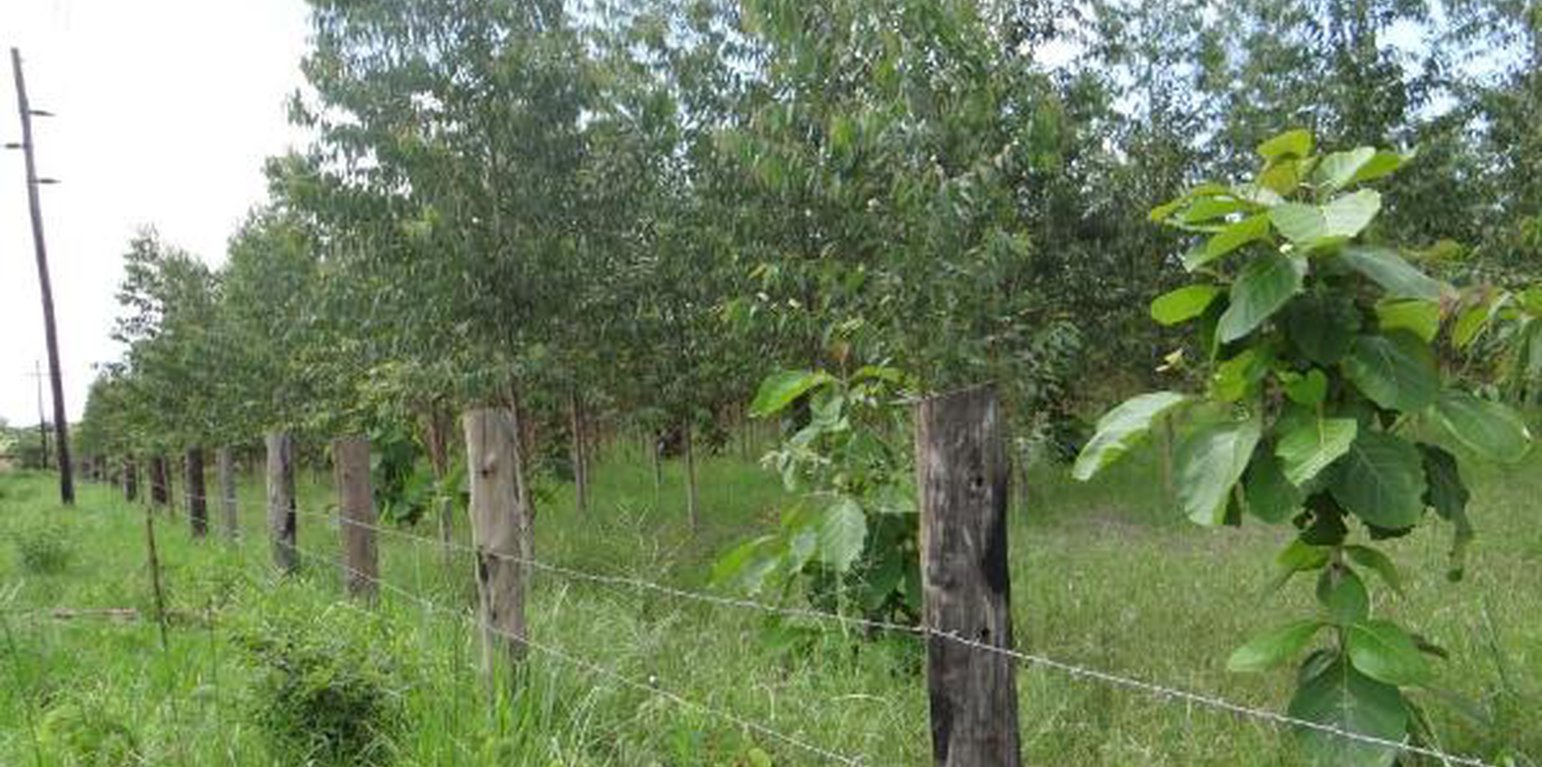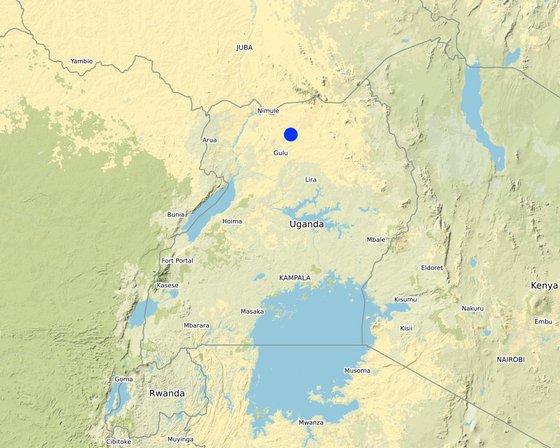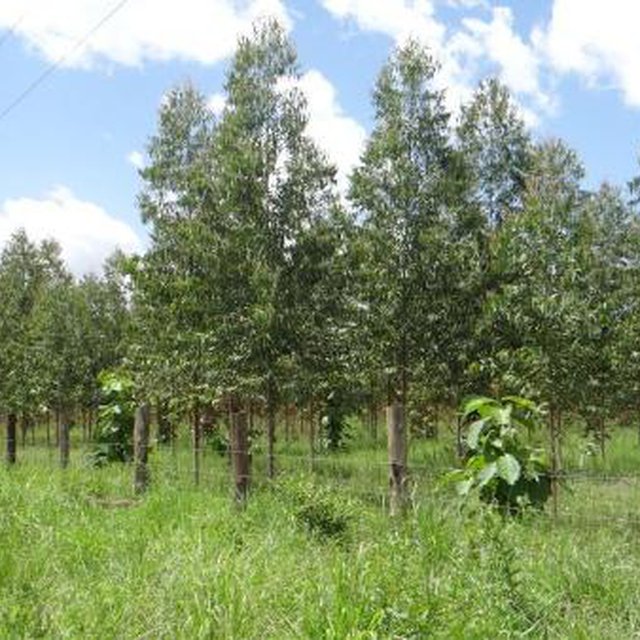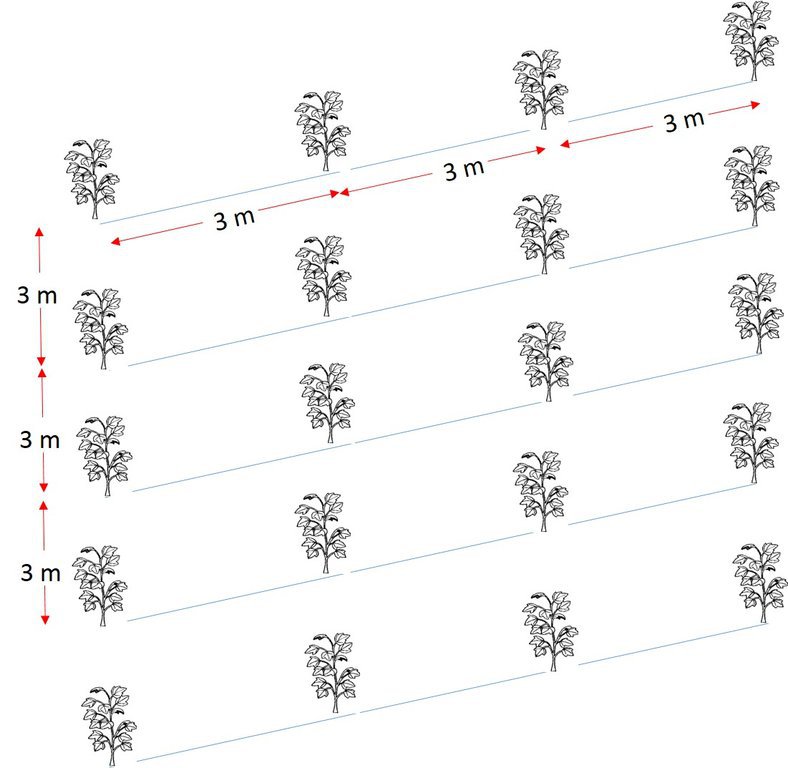



Clonal eucalyptus, commonly known as a hybrid of eucalyptus species developed by crossing various species of eucalyptus. It is fast-growing, attaining maturity for timber between 12 to15 years.
Seedlings for the eucalyptus clones are sold by various tree nursery operators in the area from where the farmers buy them. In preparation for tree planting, the land is cleared of all vegetation usually by slashing, but use of herbicides is also possible. Planting holes, measuring 30cm in diameter and depth, are dug at a spacing of 3m x 3m. Seedlings of 1-2 months age, bought from nurseries are planted in the prepared holes. Weeding is done twice a year for the first two years during which maize and beans can be intercropped with the young trees. Intercropping young trees with crops, a practice known as 'Taungya', helps to compensate for the weeding costs. Eucalyptus trees are generally self-pruning but if need arises, branches that have grown larger than 6 cm in diameter are removed using a saw. Pruning becomes necessary at the age of 3 years. At planting, the number of plants is 1,100 per hectare. Thinning is usually done at the age of 4 and 7 years, leaving about 450 plants per hactare. Protecting from animals and fire and is also done periodically by patrolling and creating fire lines in the plantation. The fire lines are created by dividing the plantation into smaller units and clearing 6-m wide strips between the units.
Farmers like the eucalyptus clones for establishing timber plantations because they grow fast and yield timber 5 to 7 years earlier than the non-hybrid species thus reducing the payback period for eucalyptus plantations. They are a source of income through the sale of poles and help in carbon sequestration which reduces the effect of climate change.
Farmers are apprehensive of this technology because the appropriate clones are difficult to locate in the tree nurseries. Secondly, some nursery operators do not tell the truth about the performance of different clones in the area. In northern Uganda, the most adaptable clone is 'GC 784', which has been observed to perform exceptionally well. The cost of the hybrid clones is 40% higher than the conventional seedlings.

الموقع: Northern, اوغندا
عدد مواقع تنفيذ التقنيةالتي تم تحليلها: موقع واحد
انتشار التقنية: منتشرة بالتساوي على مساحة (approx. < 0.1 كم2 (10 هكتار))
تاريخ التنفيذ: 2015
نوع التقديم




المواصفات الفنية
المؤلف: Bernard Fungo
Spacing of 3 x 3 meters between and within rows
Panting density of 1100 tree per ha Thinning to 450 tree per ha around year 7 |
|||||||||||
| تحديد المدخلات | الوحدة | الكمية | التكاليف لكل وحدة (Uganda Shillings) | إجمالي التكاليف لكل مدخل (Uganda Shillings) | % من التكاليف التي يتحملها مستخدمو الأراضي |
| العمالة | |||||
| Land cleaing | Hactares | 40,0 | 200003,0 | 8000120,0 | 100,0 |
| Lining-out and pitting | Hactares | 40,0 | 200000,0 | 8000000,0 | 100,0 |
| Planting | Hactares | 40,0 | 200000,0 | 8000000,0 | 100,0 |
| Weeding | Hactares | 40,0 | 200000,0 | 8000000,0 | 100,0 |
| معدات | |||||
| Thinning | Hactares | 40,0 | 400000,0 | 16000000,0 | 100,0 |
| المواد النباتية | |||||
| Seedlings | Number | 1100,0 | 500,0 | 550000,0 | 100,0 |
| إجمالي تكاليف إنشاء التقنية | 48'550'120.0 | ||||
| تحديد المدخلات | الوحدة | الكمية | التكاليف لكل وحدة (Uganda Shillings) | إجمالي التكاليف لكل مدخل (Uganda Shillings) | % من التكاليف التي يتحملها مستخدمو الأراضي |
| العمالة | |||||
| Patrols | Years | 10,0 | 500000,0 | 5000000,0 | 100,0 |
| إجمالي تكاليف صيانة التقنية | 5'000'000.0 | ||||